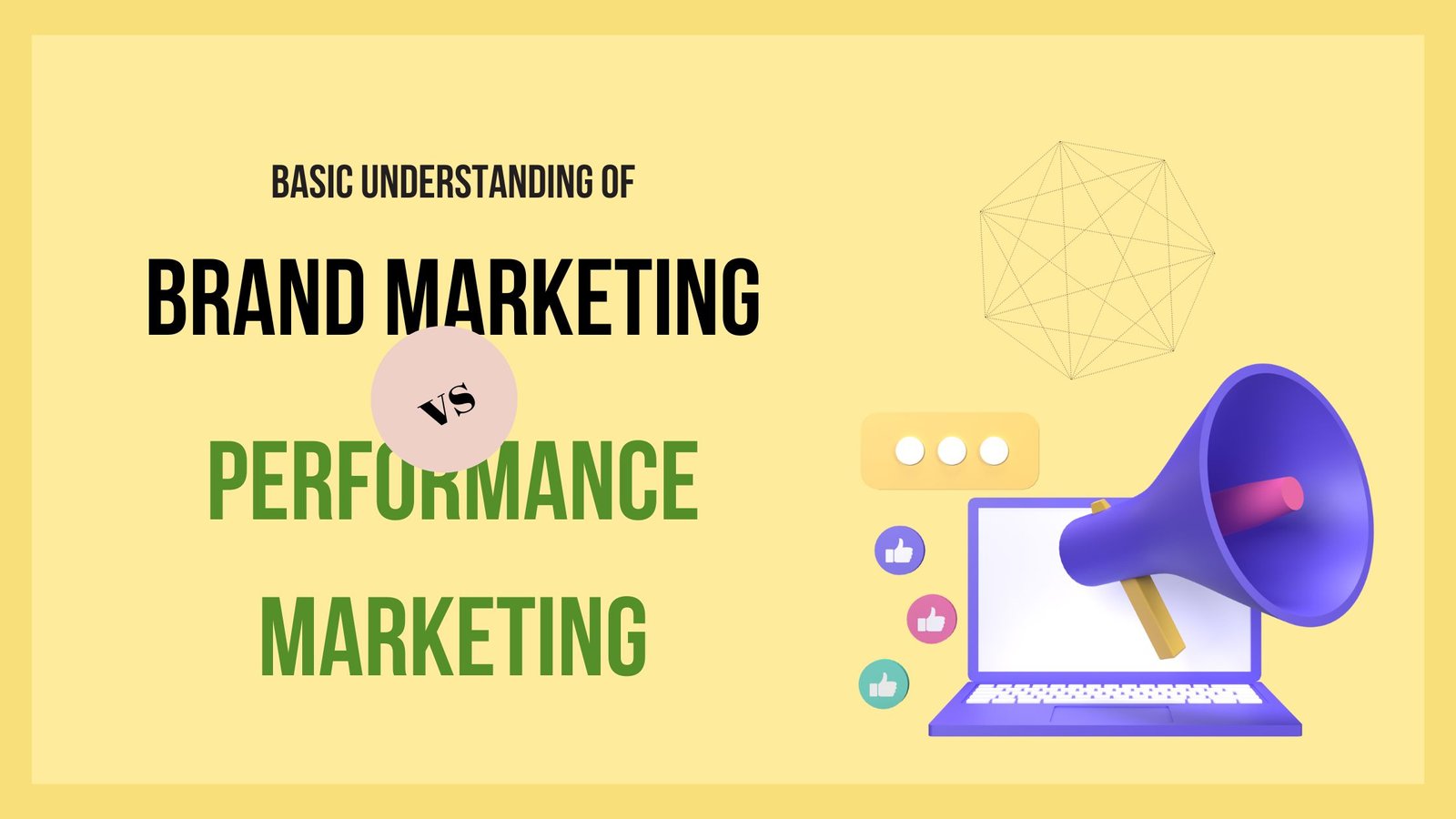In the ever-evolving landscape of digital marketing, two prominent strategies often take center stage: performance marketing and brand marketing. While both aim to promote a company’s products or services, they have distinct approaches, goals, and key performance indicators (KPIs). In this blog, we’ll delve into the differences between these two marketing strategies and explore how they can complement each other in a comprehensive marketing plan.
Performance Marketing: Driving Tangible Results
Performance marketing is all about measurable outcomes. It focuses on using various online advertising and marketing channels to drive immediate and trackable actions, such as clicks, leads, or sales. The primary characteristics of performance marketing are:
- ROI-Centric: Performance marketing is highly data-driven, emphasizing the return on investment (ROI). It allows marketers to allocate their budget efficiently by optimizing campaigns for the best-performing channels and tactics.
- Measurable KPIs: Key performance indicators in performance marketing include click-through rates (CTR), conversion rates, cost per acquisition (CPA), and return on ad spend (ROAS). These metrics provide clear insights into campaign effectiveness.
- Targeted and Personalized: Performance marketing relies on precise audience targeting. Marketers use data analysis to identify the most valuable customer segments and tailor campaigns accordingly.
- Short-Term Focus: It’s often associated with short-term goals and quick wins. Campaigns are optimized frequently to achieve immediate results.
- Paid Advertising: Paid search, display advertising, social media ads, and affiliate marketing are common channels for performance marketing.
Brand Marketing: Building Long-Term Equity
Brand marketing, on the other hand, is about creating and nurturing a brand’s identity and reputation over time. It aims to establish a deep emotional connection with the audience and foster brand loyalty. Key characteristics of brand marketing include:
- Brand Identity: Brand marketing emphasizes creating a unique brand identity, voice, and values that resonate with the target audience. It’s about telling a compelling brand story.
- Long-Term Goals: Unlike performance marketing’s immediate results, brand marketing focuses on long-term equity, including increased brand awareness, customer trust, and loyalty.
- Immeasurable Impact: While brand marketing efforts may not provide immediate, quantifiable results, they contribute to brand equity, which can lead to sustained success and customer retention.
- Content-Centric: Content marketing, influencer partnerships, storytelling, and public relations are common tactics in brand marketing.
- Emotion-Driven: Brand marketing leverages emotions to create a lasting impression. It strives to make customers feel a certain way about a brand, which can influence their purchasing decisions.
The Synergy Between Performance and Brand Marketing
While performance and brand marketing have distinct objectives, they are not mutually exclusive. In fact, the most successful marketing strategies often combine elements of both. Here’s how they can work together:
- Sequential Approach: Start with performance marketing to generate immediate results and drive traffic. Then, use brand marketing to build trust and loyalty over time.
- Unified Messaging: Ensure that your brand message is consistent across all marketing efforts, whether performance or brand-focused. This reinforces brand identity and values.
- Remarketing: Use data from performance marketing campaigns to identify engaged users and retarget them with brand-focused content. This helps nurture relationships and encourages repeat business.
- Content Integration: Blend performance-driven content (e.g., product listings) with brand-focused storytelling to engage and convert customers.
- Shared Insights: Data from performance marketing can provide valuable insights into customer behavior, which can inform brand marketing strategies.
In conclusion, performance marketing and brand marketing serve different purposes within the marketing ecosystem. Performance marketing delivers immediate, measurable results, while brand marketing builds long-term brand equity and loyalty. However, a holistic marketing approach that combines elements of both strategies can be the key to a well-rounded and successful marketing campaign, maximizing both short-term gains and long-term growth. By understanding and leveraging the strengths of each approach, businesses can create a powerful marketing mix tailored to their unique goals and target audience.


